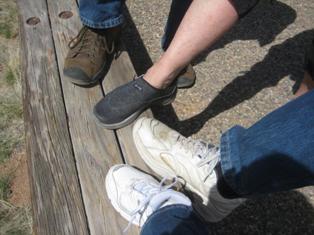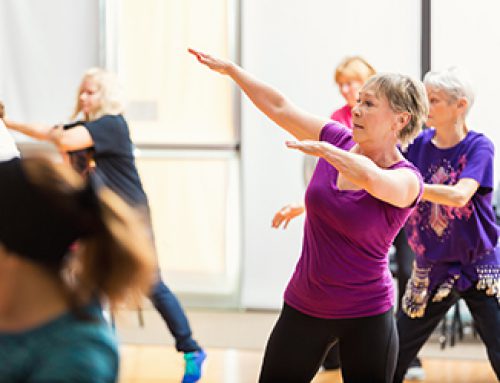These feet were made for walking!
 The walkers of Albuquerque Oasis wanted to become informed about fall prevention, and yes, how to transition the body from a fallen position to upright, so we can continue walking. A three-part workshop taught by Ben Thomson of Thomson Training Solutions was the perfect opportunity to learn more.
The walkers of Albuquerque Oasis wanted to become informed about fall prevention, and yes, how to transition the body from a fallen position to upright, so we can continue walking. A three-part workshop taught by Ben Thomson of Thomson Training Solutions was the perfect opportunity to learn more.
The workshop includes elements of psychology, massage therapy, holistic health counseling and martial arts to help individuals obtain higher levels of confidence and mobility. There was a lot to learn, but these key takeaways are helpful for walking of any kind.
Breathe.
A calm mind and body focused on breathing, relaxation and easy motion will have fewer accidents. So center yourself and breathe deeply. Try breathing from the pit of the stomach and in through the nasal passages to filter and clean the oxygen, then slowly release the breath out of the mouth. Practice may be necessary.
Think about your steps.
To keep the mind from wandering, walk with a longer stride and count to five and then count backward…five to one. Or count by sevens to forty-nine forward then backward. This kind of activity simultaneously keeps the mind and body busy. If walking in the park or mall, look ahead twelve feet, see what is up ahead and along the way. Potential obstacles in view, look down and see where your feet are in relation to the terrain. Raise your eyes and keep walking.
Be mindful of your body in your space.
Another important factor is proprioception or the awareness of where you are in your space, and the sense of the body parts in relation to each other. Do a home test: close your eyes and alternate touching your nose with your right index finger and then with your left index finger. See if your finger knows where your nose is located. The ability to navigate through a dark room is a good indicator of your proprioception.
Know how to rise.
If you are tired of walking, sit on a bench or the ground. Learn to rise up from a sitting position. Spread the feet apart and use legs and lower body to stand up. Breathing becomes very important here. Inhale when preparing to stand. The energy force will help elevate your body. If a fall happens, wait a few seconds, check your moving part and slowly turn on your side into the most comfortable fetal position.
The Center for Disease Control offers a number of additional tips for preventing falls, including:
- Get some exercise. Lack of exercise can lead to weak legs and this increases the chances of falling. Exercise programs can increase strength and improve balance, making falls much less likely.
- Be mindful of medications. Some medicines—or combinations of medicines—can have side effects such as dizziness or drowsiness. This can make falling more likely. Having a doctor or pharmacist review all medications can help reduce the chance of risky side effects and drug interactions.
- Keep vision sharp. Poor vision can make it harder to get around safely. Older adults should have their eyes checked every year and wear glasses or contact lenses with the right prescription strength to ensure they are seeing clearly.
- Eliminate hazards at home. About half of all falls happen at home. A home safety check can help identify potential fall hazards that need to be removed or changed, such as tripping hazards, clutter, and poor lighting.
Oasis offers a number of classes designed to help prevent falls, including Better Balance, Matter of Balance and Free From Falls. Check out your local Oasis catalog to sign up today.
 Betty Higbie is an active member of a walking group at the Albuquerque Oasis and a frequent guest blogger.
Betty Higbie is an active member of a walking group at the Albuquerque Oasis and a frequent guest blogger.




